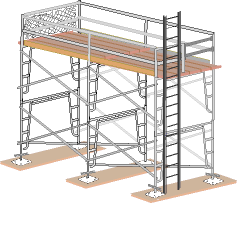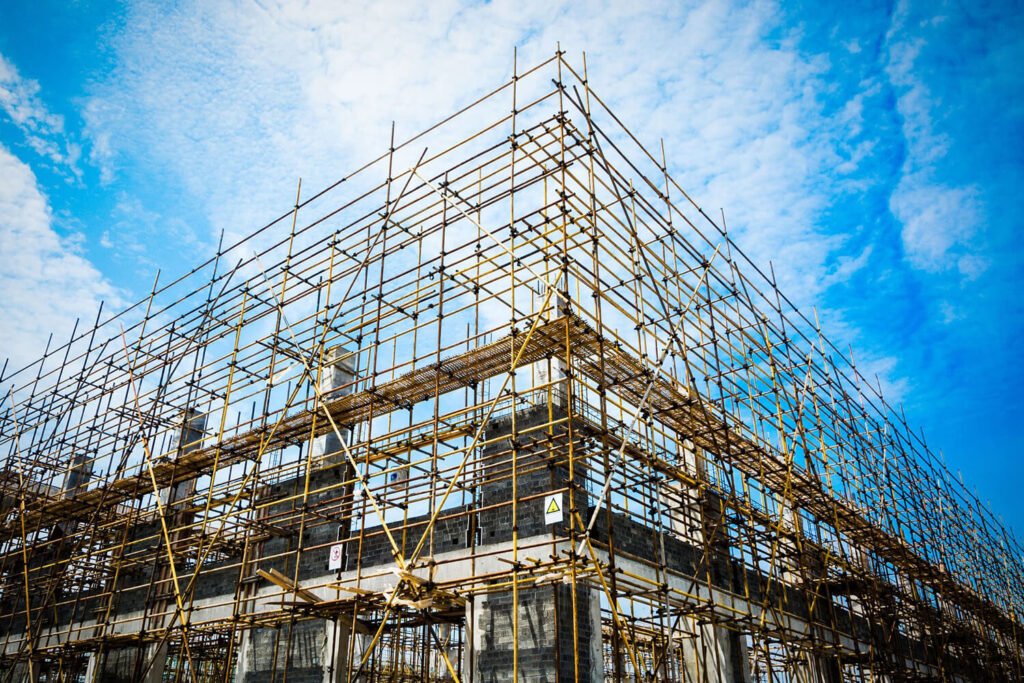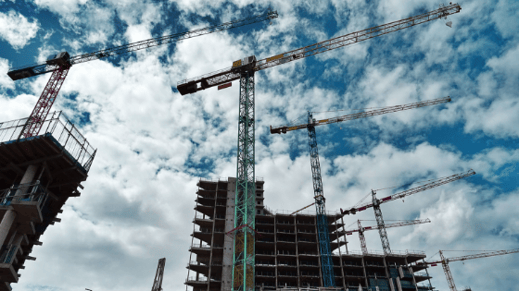Professional Scaffolder Surrey: Your Trusted Partner for Safe Installations
Professional Scaffolder Surrey: Your Trusted Partner for Safe Installations
Blog Article
Discovering the Numerous Kinds of Scaffolding Used in Building And Construction Tasks
The building industry counts heavily on numerous sorts of scaffolding to fulfill particular project demands, each offering distinctive benefits and applications. Conventional frame scaffolding offers a durable foundation for general tasks, while suspended scaffolding is important for work with skyscraper frameworks. Various other alternatives, such as system and rolling scaffolding, deal with performance and movement, specifically. Furthermore, the cantilever variant shows invaluable in urban environments where area is constricted. Comprehending the nuances of these scaffolding kinds is important for optimizing safety and efficiency on construction websites, prompting a more detailed exam of their unique qualities and applications.

Traditional Structure Scaffolding
Standard framework scaffolding is just one of the most widely used methods in the construction industry because of its toughness and adaptability. This system consists of horizontal and vertical frameworks that are assembled to create a steady system for employees and products. The primary elements include vertical messages, horizontal journals, and angled dental braces, which together give a solid structure that can support significant loads.
One of the key benefits of standard structure scaffolding is its adaptability to different building jobs, ranging from domestic buildings to large industrial frameworks. The modular style permits for very easy setting up and disassembly, making it efficient for both long-term and short-term jobs. In addition, the system can be tailored in elevation and size, accommodating various structure designs and site problems.
Safety and security is critical in scaffolding applications, and traditional framework systems are equipped with guardrails and toe boards to protect against falls and make certain employee protection. Regular evaluations and adherence to safety laws are vital in preserving the honesty of the scaffold (Scaffolding). In general, standard structure scaffolding remains a basic selection in the building and construction market, providing a reputable platform for labor and boosting overall task efficiency

Suspended Scaffolding
Suspended scaffolding uses a special service for construction tasks that need access to raised surface areas, particularly in situations where standard framework scaffolding may be impractical. This kind of scaffolding is normally suspended from the roof or top levels of a framework, using a system of ropes, platforms, and pulleys to develop a functioning room that can be gotten used to different elevations.
Among the key benefits of suspended scaffolding is its flexibility. It can be conveniently repositioned or decreased to accommodate adjustments in building demands, making it ideal for jobs such as window installation, façade work, and upkeep on skyscraper buildings. In addition, the minimal footprint of suspended scaffolding permits better use ground space in metropolitan settings, where space is often restricted.
Safety and security is a critical consideration in using suspended scaffolding. Appropriate rigging and securing systems should be utilized to ensure security and avoid crashes. Operators should also be learnt the secure use of this tools. In general, put on hold scaffolding provides a efficient and effective solution for accessing hard-to-reach locations in numerous building and construction circumstances, improving both productivity and safety and security on site.
System Scaffolding
System scaffolding, frequently concerned as a contemporary service in the scaffolding market, includes pre-engineered elements that can be swiftly assembled and adapted for various building tasks. Scaffolding. This sort of scaffolding is identified by its modular layout, which permits convenience and effectiveness on job websites, fitting various heights and architectural demands
Commonly made from high-strength steel or light weight aluminum, system scaffolding uses enhanced sturdiness and stability. The components include vertical posts, straight ledgers, and diagonal dental braces, which interconnect firmly, making certain a robust framework. The layout usually includes standardized fittings, simplifying setting up and disassembly procedures, consequently minimizing labor time and costs.

Rolling Scaffolding
Moving scaffolding is a versatile alternative to conventional set scaffolding, created for flexibility and ease of use on building websites. This kind of scaffolding includes a platform sustained by frames with wheels, permitting workers to easily relocate it as needed. The mobility function significantly improves efficiency, as it reduces downtime related to constructing and disassembling taken care of scaffolding.
Normally constructed from lightweight products such as aluminum or steel, rolling scaffolding provides a tough yet portable option for jobs calling for frequent repositioning - Scaffolding. It is especially helpful in tasks such as paint, drywall setup, and electrical work, where access to various elevations and locations is essential
Security is critical in rolling scaffolding design, with features such as securing wheels to protect against unintentional motion when in use, and guardrails to protect employees from falls. In addition, lots of designs are adjustable in height, fitting numerous task requirements.
Cantilever Scaffolding

The layout of cantilever scaffolding typically entails utilizing brackets or arms anchored to a structure or framework, allowing the platform to extend external safely. Security is paramount; hence, these scaffolds have to be crafted to hold up against numerous lots and environmental problems. Normal examination and upkeep are crucial to ensure architectural honesty and employee security.
Cantilever scaffolding is favored for its versatility and efficient use area, making it a prominent option in urban settings where room restraints prevail. It facilitates simpler accessibility to high altitudes, inevitably adding to the total performance of building and construction jobs. As with all scaffolding kinds, appropriate training and adherence to security requirements are critical for workers using cantilever scaffolding.
Final Thought
Finally, the diverse sorts of scaffolding utilized in construction tasks each offer distinctive objectives customized to certain site demands. Typical structure scaffolding supplies security, while suspended scaffolding uses versatility for raised tasks. System scaffolding promotes quick setting up, and rolling scaffolding enhances wheelchair for differing workplace. Cantilever scaffolding successfully attends to barriers in urban setups. Understanding these scaffolding types is important for enhancing safety and security and productivity in building, inevitably contributing to the successful conclusion of tasks.
Conventional frame scaffolding supplies a strong structure for basic jobs, while put on hold scaffolding is crucial for work on skyscraper frameworks.Moving scaffolding is a versatile option to standard set scaffolding, made for movement and simplicity of use on building and construction sites. As with all scaffolding types, proper training and adherence to safety requirements are crucial for employees using cantilever scaffolding.
Typical structure scaffolding supplies security, while put on hold scaffolding offers adaptability for raised jobs. System scaffolding promotes fast assembly, and rolling scaffolding enhances wheelchair for varying work environments.
Report this page